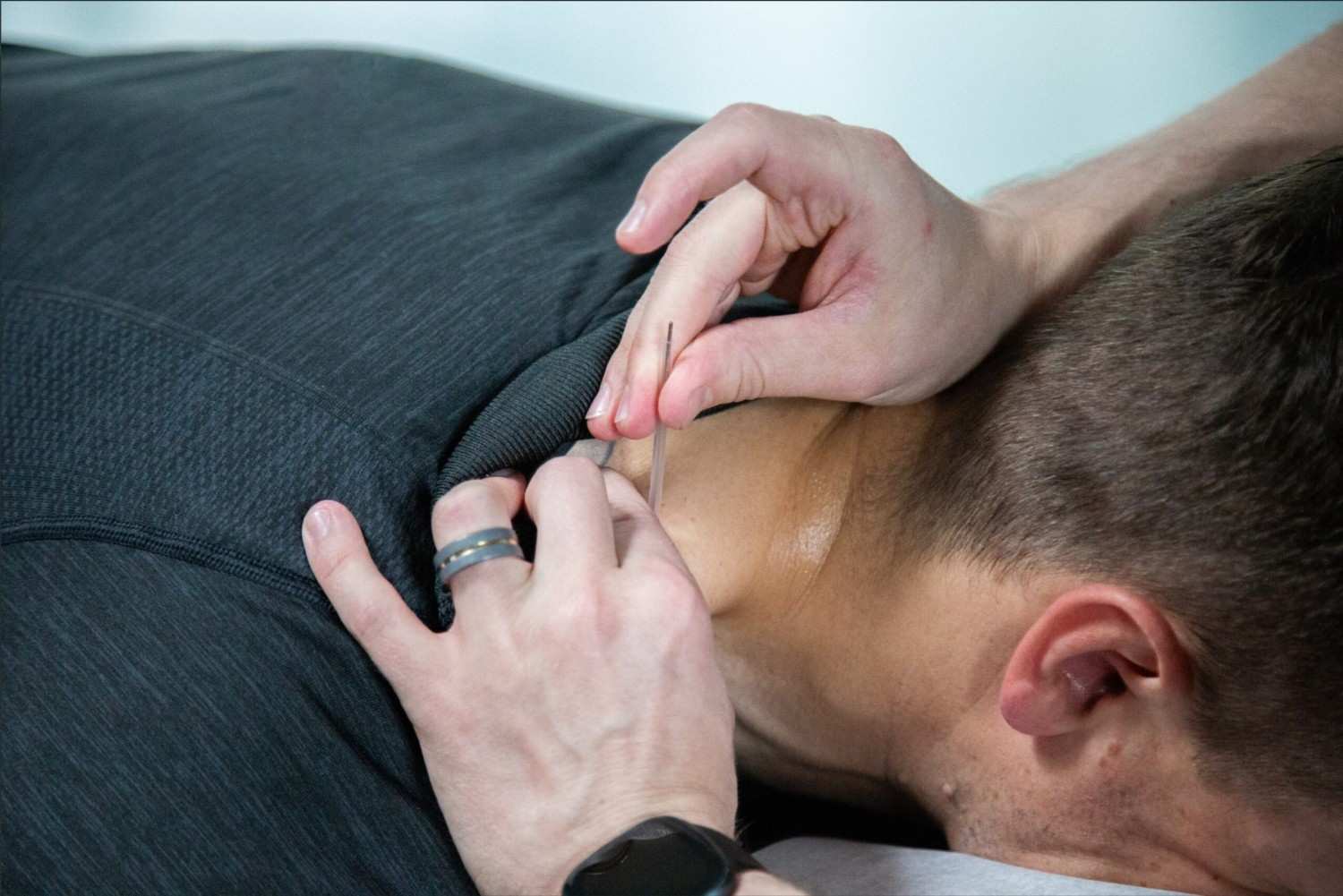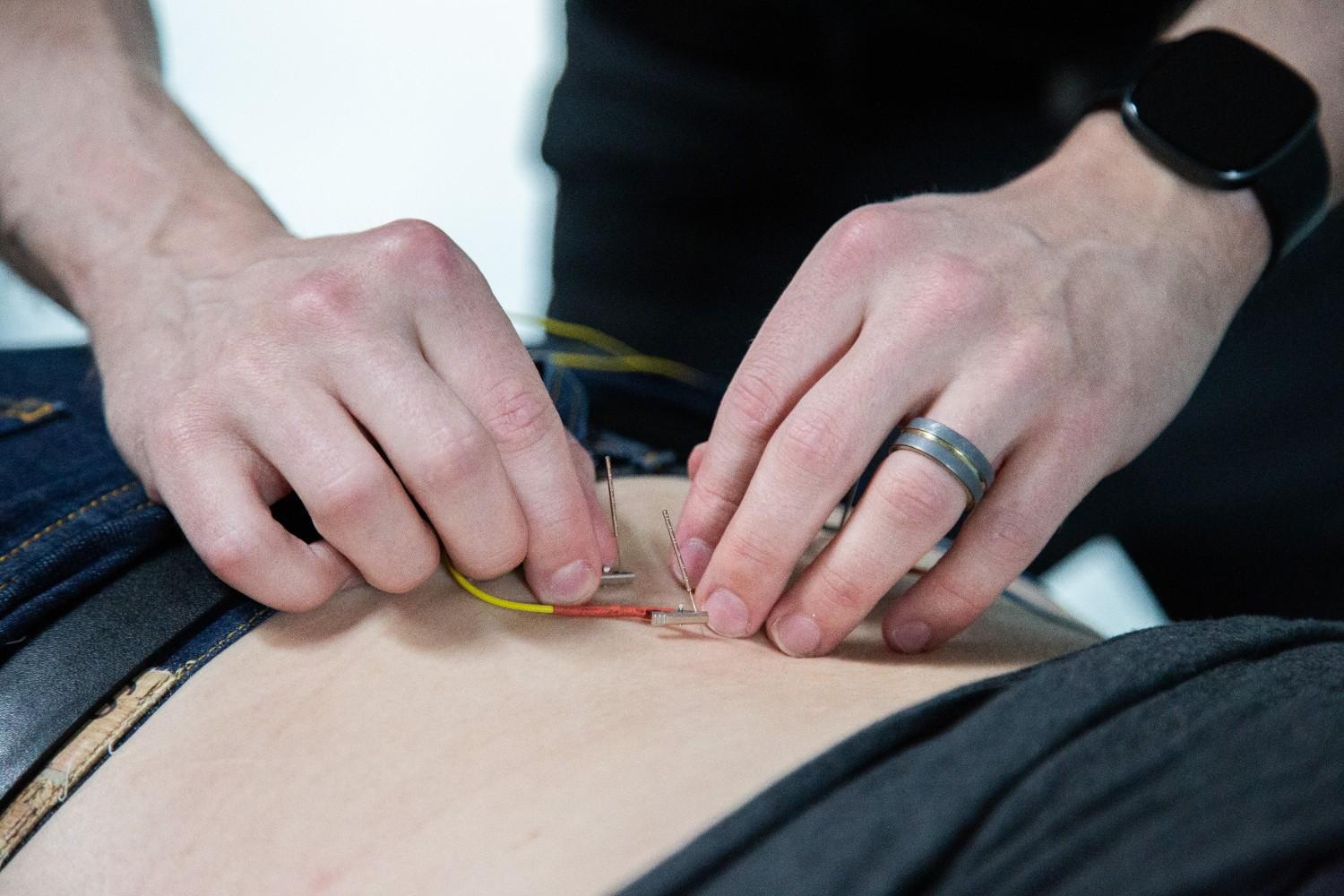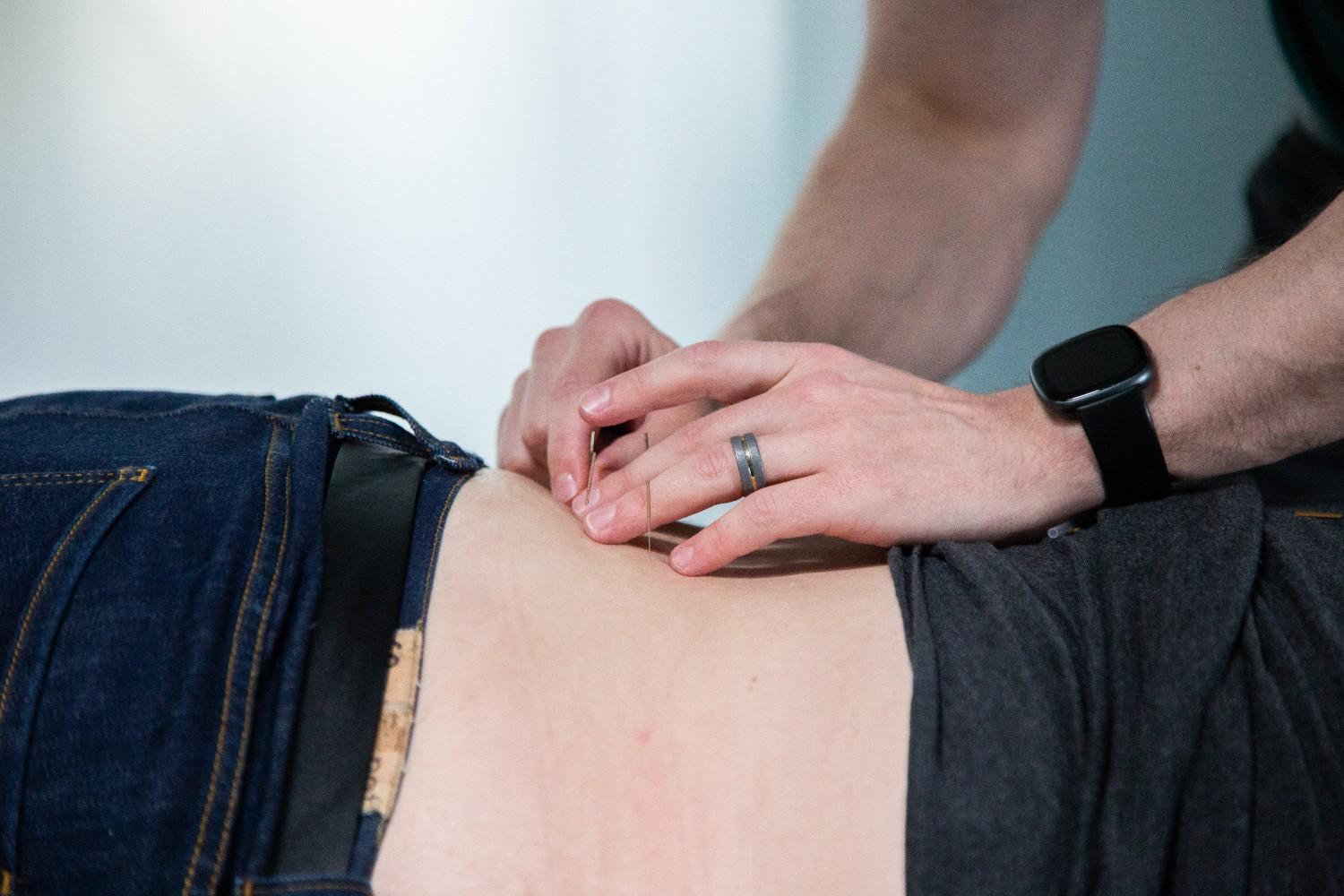
14 Jan The Science Behind Acupuncture and Dry Needling: How They Work to Keep You Moving
Muscle pain, stiffness, and limited mobility can significantly impact your quality of life. Whether you’re an athlete, a weekend warrior, or someone who spends long hours at a desk, these issues can hinder your daily activities. At MYo Lab Health & Wellness in Calgary, Alberta, we’re committed to helping you regain your freedom of movement. Two effective treatments we offer are acupuncture and dry needling. But how do they work? Let’s delve into the science behind these therapies and discover how they can support your mobility and recovery.
Understanding Acupuncture
Origins in Traditional Chinese Medicine
Acupuncture is a key component of Traditional Chinese Medicine (TCM), a holistic healthcare system that has been practiced for over 2,500 years.
How Acupuncture Works
When Qi flows freely, the body is in balance and healthy. However, blockages or imbalances can lead to pain, illness, or dysfunction. Acupuncture involves inserting ultra-thin, sterile needles into specific acupoints along the meridians to restore the balanced flow of Qi.
Physiological Effects of Acupuncture
Modern research suggests several physiological mechanisms by which acupuncture promotes healing:
- Nervous System Activation: Stimulates nerves in muscles and tissues, leading to the release of endorphins and other neurochemicals that modulate pain and regulate physiological functions.
- Improved Blood Flow: Increases circulation in targeted areas, promoting oxygenation and nutrient delivery while removing metabolic waste.
- Immune System Modulation: Influences immune responses, reducing inflammation and enhancing tissue repair.

Demystifying Dry Needling
A Western Medical Approach
Dry needling is a technique rooted in Western medical principles. It’s designed to treat musculoskeletal pain and dysfunction by targeting myofascial trigger points—tight knots in muscles that can cause pain and limit movement.
How Dry Needling Works
Using thin, filiform needles, practitioners insert them directly into trigger points to elicit a local twitch response. This response indicates that the needle has accessed the hyperirritable spot within the muscle fibre.
Physiological Effects of Dry Needling
Dry needling facilitates several therapeutic effects:
- Release of Muscle Tension: Disrupts the contracted nature of the trigger point, allowing the muscle to relax.
- Pain Signal Interruption: Alters the way pain signals are transmitted to the brain, reducing perceived discomfort.
- Enhanced Healing: Promotes increased blood flow and accelerates the body’s natural healing processes.
Comparing Acupuncture and Dry Needling
While both therapies involve needle insertion and aim to relieve pain, they differ in philosophy and application.
Similarities
- Use of thin, sterile needles.
- Aim to alleviate pain and improve function.
- Can be used to treat a variety of musculoskeletal conditions.
Differences
- Philosophical Foundation: Acupuncture is based on TCM and the flow of Qi, whereas dry needling is grounded in Western anatomy and physiology.
- Technique: Acupuncture targets acupoints along meridians; dry needling focuses on trigger points within muscles.
- Scope of Treatment: Acupuncture addresses a wide range of health issues beyond musculoskeletal pain, including stress, digestive issues, and more.
How These Treatments Support Mobility and Recovery
Pain Relief Mechanisms
Both treatments stimulate the release of endorphins and enkephalins, natural pain-relieving chemicals in the body. This leads to reduced pain sensations and allows for greater ease of movement.
Improved Muscle Function
By releasing muscle knots and tension, these therapies restore normal muscle length and function, enhancing flexibility and performance.
Enhanced Circulation
Increased blood flow brings essential nutrients and oxygen to tissues, promoting faster recovery from injuries and reducing inflammation.
Neurological Benefits
Stimulation of the nervous system can improve neural communication, leading to better muscle activation patterns and coordination.
The Science Behind the Needles
Evidence Supporting Acupuncture
Research has demonstrated acupuncture’s effectiveness in treating various conditions:
Inflammation Reduction: Acupuncture has been found to decrease pro-inflammatory markers, aiding in conditions like arthritis.
Chronic Pain: Studies in the Journal of Pain have shown significant pain reduction in chronic conditions like back pain and osteoarthritis.
Neurological Effects: Functional MRI scans indicate that acupuncture can alter brain activity associated with pain processing.
Dry Needling Research
Dry needling is also backed by scientific studies:
- Trigger Point Deactivation: Research shows that dry needling effectively reduces the irritability of trigger points.
- Improved Range of Motion: Athletes have reported increased flexibility and decreased muscle tightness post-treatment.
- Pain Reduction: Clinical trials indicate significant decreases in pain intensity for conditions like neck and shoulder pain.

Conditions Treated with Acupuncture and Dry Needling
Both acupuncture and dry needling can be effective for a wide range of conditions:
- Musculoskeletal Pain: Back pain, neck pain, shoulder pain, and joint pain.
- Sports Injuries: Sprains, strains, and overuse injuries.
- Headaches and Migraines: Reduction in frequency and intensity of headaches.
- Tendonitis and Bursitis: Relief from inflammation and pain in tendons and bursae.
- Postural Issues: Addressing muscle imbalances due to poor posture.
- Fibromyalgia: Management of widespread musculoskeletal pain and fatigue.
What to Expect During Treatment
Initial Consultation
At MYo Lab Health & Wellness, your journey begins with a thorough assessment:
- Medical History Review: Understanding your health background and any underlying conditions.
- Physical Examination: Identifying areas of pain, tension, and restricted movement.
- Goal Setting: Discuss your objectives for treatment and recovery.
Acupuncture Session
- Preparation: You will be comfortably positioned, usually lying down.
- Needle Insertion: Fine needles are gently inserted into specific acupoints.
- Relaxation: Needles remain in place for 15-30 minutes while you relax.
- Sensation: You may feel a slight tingling, warmth, or heaviness—these are normal responses.
Dry Needling Session
- Targeting Trigger Points: The practitioner identifies hyperirritable spots in the muscle.
- Needle Insertion: Needles are inserted directly into the trigger points.
- Local Twitch Response: A brief involuntary muscle contraction indicates effective needle placement.
- Duration: Needles may be manipulated briefly and then removed.
Safety and Side Effects
Safety Measures
- Qualified Practitioners: Our team consists of licensed professionals trained in acupuncture and dry needling.
- Sterile Equipment: Single-use, disposable needles are used to prevent any risk of infection.
- Personalized Care: Treatments are tailored to your specific needs and medical history.
Potential Side Effects
Most side effects are mild and temporary:
- Soreness: Mild soreness at the needle insertion sites may occur.
- Bruising: Minor bruising can happen but typically resolves quickly.
- Fatigue: Some individuals may feel tired after a session.
Choosing the Right Therapy for You
Acupuncture May Be Preferred If:
- You are interested in a holistic approach that addresses overall wellness.
- You have multiple health concerns, such as stress, digestive issues, or insomnia, in addition to musculoskeletal pain.
- You prefer a gentler technique without intense muscle stimulation.
Dry Needling May Be Preferred If:
- You have specific muscular pain or tightness due to trigger points.
- You’re seeking quick relief from muscle knots and tension.
- You’re an athlete looking to enhance performance and recovery.
Consultation is Key
Our practitioners will help determine the most appropriate therapy based on:
- Your Symptoms: The nature and location of your pain.
- Your Health Goals: Whether you’re aiming for overall wellness or targeting specific issues.
- Your Comfort Level: Preferences regarding treatment techniques.
Integrating Therapies for Optimal Results
Combining acupuncture or dry needling with other therapies can enhance healing:
- Chiropractic Care: Aligning the spine and joints to support nervous system function.
- Physiotherapy: Incorporating exercises to strengthen muscles and improve flexibility.
- Massage Therapy: Reducing muscle tension and promoting relaxation.
Lifestyle Recommendations
To maximize the benefits of your treatments:
- Stay Hydrated: Drinking water aids in flushing out toxins released during therapy.
- Gentle Movement: Engage in light activities like walking or stretching to promote circulation.
- Rest: Allow your body time to heal by getting adequate sleep.
- Follow Practitioner Advice: Adhere to any post-treatment instructions provided.
Why Choose MYo Lab Health & Wellness

At MYo Lab, we integrate these therapies into personalized treatment plans to help you achieve optimal health.
Our Comprehensive Services
- Chiropractic Care: Aligns the spine and joints to improve nervous system function.
- Physiotherapy: Enhances mobility and strength through targeted exercises.
- Massage Therapy: Relieves muscle tension and promotes relaxation.
Expert Practitioners
Our team is comprised of highly trained professionals certified in acupuncture and dry needling techniques. We prioritize patient education and safety in all our treatments.
Patient-Centered Approach
We believe in a holistic view of health, addressing not just symptoms but underlying causes. Our customized plans are designed to meet your unique needs and goals.
Frequently Asked Questions
Does Needle Insertion Hurt?
Most patients report minimal discomfort. You may feel a slight prick or a dull ache upon needle insertion, but the sensations are generally brief.
How Many Sessions Will I Need?
The number of sessions varies based on individual conditions and goals. Some patients experience relief after one session, while others benefit from a series of treatments.
Are These Treatments Safe?
Yes, when performed by qualified professionals. We use single-use, sterile needles and adhere to strict safety protocols.
Can I Combine These Treatments with Other Therapies?
Absolutely! Integrating acupuncture or dry needling with other services like chiropractic care or physiotherapy can enhance overall results.
Take the First Step Towards Enhanced Mobility
Don’t let pain and stiffness hold you back from the activities you love. Acupuncture and dry needling offer effective, science-backed solutions to help you move freely again.
Experience the benefits for yourself at MYo Lab Health & Wellness in Calgary. Schedule your consultation and let our expert team guide you on your journey to recovery. Book Your Appointment Today